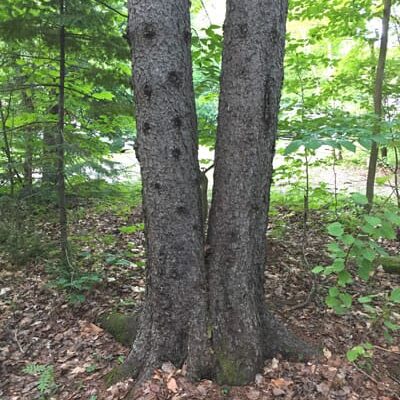Cabling & Bracing
If you answer "yes" to any of these questions, your tree will probably benefit from cabling and/or bracing.
What Is Cabling & Bracing?
Cabling and bracing are two techniques used to hold a tree together so that it won’t split apart (or split further), and to prevent branches from breaking.
In some cases, tree removal is the only viable option when dealing with splitting or failing trees. But if the tree is healthy enough and if a Certified Arborist is contacted in time, cabling and/or bracing can save your tree.
Cabling
Cables (usually metal) are fastened between branches to restrict the distance that a branch can move in relation to the rest of the tree. Cables are usually installed across a weak crotch to reduce the risk of a branch breaking or on overextended branches to support the branch. We usually need to install several cables to stabilize a tree.
Bracing
Bracing is mostly used on a tree with codominant stems (to stop the stems from moving around) or when a tree trunk or branch has split (to hold the split parts together). It involves using a strong metal rod that’s either screwed into the two stems or poked through the tree stems and bolted together. The rods hold the tree parts firmly in place and are typically used in conjunction with at least one cable for additional support.
Why Trees Split Apart
One of the most common reasons why trees break is because they’re poorly structured, usually due to codominant stems (that’s when there are 2 or more trunks so your tree looks like a “V” or “Y”). This type of tree structure has particularly weak connective tissue holding the stems together. The tighter the “V” shape, the more likely your tree is to fail – unless proper bracing and cabling is installed in a timely manner.

Contact Arbor Experts
Does your tree need cabling or bracing?
Drop us a line today for a free quote!
